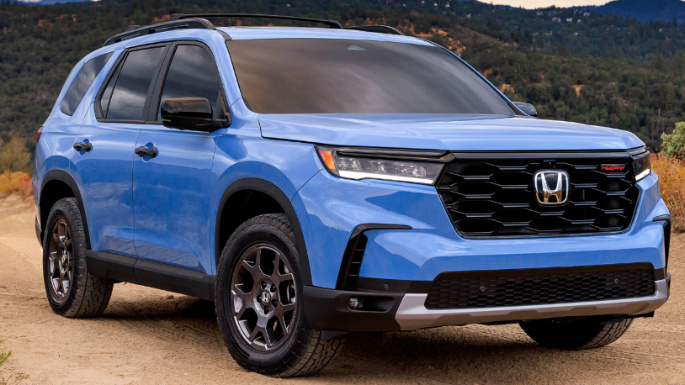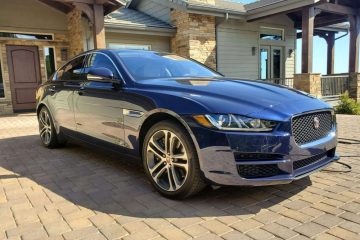With a conservative appearance and a spacious three-row interior, the Honda Pilot has always been aimed at older people and families. Its buyers care about the reliability and practicality of the family car. The Pilot did an excellent job of all these tasks, but as with any other vehicle that has been around for more than two decades, some years of Honda Pilot manufacturing are to be the best, with minor reclamations to the cars’ quality. After analyzing recall data and complaints by model year, the Indy Auto Man used car dealerhsip specialists offer an overview of the best and worst generations of the Pilot.
History
Released in 2002 (for the 2003 model year), the first generation Honda Pilot was a mid-size crossover that replaced the aging Passport. The Pilot had a monocoque structure that made driving much more comfortable. In the Honda lineup, this practical crossover occupies a position above the highly popular CR-V. The second generation appeared in 2008 with a more austere appearance and a more powerful V6 engine. Buyers liked it, and 2009 became the best sales year in history. The third generation came out in 2015 and strengthened the SUV’s aerodynamics. Its interior was reminiscent of the Odyssey minivan, and despite its narrower dimensions, Pilot was very spacious inside. Finally, the fourth-generation Pilot arrived at the end of 2022 with a new version of TrailSport – “for adventure lovers.” Over the years, Honda has remained faithful to the naturally aspirated V6, while automatic transmissions have evolved from simple five-speed units to the ten-speed unit found in the car today.
Determining the most reliable ones
Owner complaints are often more informative than factory reviews. And it’s not even a matter of reliability – Honda, along with Toyota, is a leader in this league. The fact is that some common problems are not necessarily so grave as to require a recall, but they are quite capable of ruining your life in the long run.
Those who want the most trouble-free Pilot should choose a new or almost new car of the latest, fourth generation. But previous model years also have something to offer.
1. 2015 Honda Pilot.
2015 was the last model year of the second and most popular generation. Buying a car at the final stage of its life cycle often means that all the shortcomings have already been eliminated. So, the 2015 Pilot has a minimal number of problems. At least, there are fewer of them than the average for all other generations. It has had three recalls, all related to airbags (Takata), affecting millions of vehicles from leading brands. This Pilot has a solid rating for quality and reliability from J.D. Power (79 out of 100). Its V6 output reaches 250 horsepower, and despite its age, the model is equipped with modern amenities, such as a touchscreen interface and Bluetooth.
2. 2014 Honda Pilot.
The 2014 Pilot isn’t far behind the 2015, with the same reviews. Interestingly, its J.D. Power reliability rating is even higher, at 84/100. Given the absence of considerable differences between these model years, experts expect similar reliability.
3. 2008 Honda Pilot.
Despite its age, there are few complaints about the 2008 Pilot. This was the last model year of the first generation, and the owner will have far fewer problems with it than with the previous ones. It has a new V6, which arrived in late 2005 when Honda simultaneously improved the five-speed transmission (transmission failures have been common in Pilots for years). J.D. Power Quality and Reliability Rating – 85 out of 100 is a good indicator, although the appearance and ancient interior might spoil the impression.
Third Generation: Not All Are Equal
Those looking for a more modern third-generation Pilot should skip the 2016. Based on the number of electrical and engine breakdowns, this is the second most problematic Pilot after the 2003 model. Its quality and reliability rating is J.D. Power 74 out of 100 scores, which is well below similar vehicles (like the Toyota Highlander). At one time, Honda announced a recall due to a “manufacturing defect in the crankshaft.” Its symptoms included unusual engine noises, decreased power, and unexpected stopping of operation. Simply put, it could suddenly stall. And with a class action lawsuit over the nine-speed automatic, the 2016 model doesn’t live up to the Honda’s stellar reputation.
The number of complaints about 2018 cars is significantly less than for 2016-2017 manufacturing years. Experts also recommend the six-speed automatic transmission installed before the 2021 model year, as the nine-speed unit it replaced had quite a few problems. All things considered, the 2018 Pilot with a six-speed automatic seems to be the safest choice of the entire third generation.
Reliable SUV, But Requires Attention When Buying
In a study of high-mileage cars most likely to go another 200 thousand miles, the Pilot came third, behind only Toyota SUVs (Land Cruiser and Sequoia). Despite the issues, any Pilot is a tough, reliable car that can outlast most competitors. The last years of production of the first and second generations seem to be the most reliable, but it is advisable to opt for an option with lower mileage.




